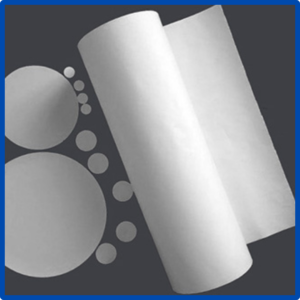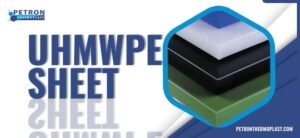Why Is The Top Quality PVDF Material Required for Various Industrial Applications?
Extruded stock shapes of polyvinylidene fluoride engineering plastic are part of a range of excellent mechanical properties of plastic products for machining into industrial components. PVDF material made products are manufactured in modern manufacturing facilities using the best raw materials under a strict quality control regime. As a result, crystalline, stress-relieved products of consistent quality that meet international standards are produced.
What exactly is PVDF?
PVDF is a high-purity crystalline fluorinated thermoplastic with excellent chemical impedance to organic and mineral acids, hydrocarbons, and solvents. It has mechanical toughness, much-reduced moisture absorption, and a wide service temperature range of -40 to 150 degrees Celsius. Its high wear resistance, low coefficient of friction, UV resistance, self-extinguishing nature, and radiation transparency make it useful in various applications, including chemical processing, food, pharmaceutical, and paper manufacturing.
PVDF is easily fabricated with standard metalworking machine tools, yielding a smooth surface finish and close tolerances. On the back side, designers will find information on technical properties. On request, more specific data and engineering support are available.
Advantages of PVDF:
- Outstanding chemical resistance
- Mechanical toughness and strength
- Dimensional stability is excellent
- Temperature range of service
- Food contact applications are permitted
- UV radiation resistance and
- Non-contaminating
PVDF composition:
The polarity of the polymer chain’s alternating CH2 and CF2 groups results in preferable insolubility and electrical properties. PVDF is easily melted and can be moulded into products using injection molding and compression moulding techniques. As a result, it’s widely used in chemical processing equipment like pumps, valves, pipelines, tubes, fittings, sensors, and actuators.
It’s used in a wide range of electronic devices, most notably as jacketing materials for plenum-rated wire used in phone and video devices and security systems. PVDF is ideal for these applications due to its limited flame transmission and smoke emission.
Major properties of PVDF:
Mechanical properties:
PVDF has a tensile modulus similar to ETFE and ECTFE but a lower impact resistance. When exposed to flame, PVDF is non-flammable and does not drop. It is self-extinguishing and TL V0 compatible. The LOI currently stands at 44%. It is also resistant to UV light.
Chemical properties:
PVDF can be dissolved at high temperatures in organic solvents such as esters and amines, enabling it to be used as corrosion-resistant layers on synthetic process equipment and architectural panels. PVDF parts are resistant to mineral and organic acids, aliphatic and aromatic hydrocarbons, alcohols, and halogenated solvents.
Physical properties:
PVDF items have the highest heat deflection temperature under load despite having one of the smallest melting temperatures among commercial fluorothermoplastics. In comparison to other fluoropolymers, PVDF has a low penetration value. Owing to its crystallinity and outer layer tension, PVDF has a very low permeability to gases and liquids. PVDF permeability is affected by crystalline degree and crystalline component modification.
Electrical and piezoelectric properties:
PVDF plastic has an elevated dielectric constant and dissipation attribute, making it ideal for electrical and piezoelectric applications. However, due to their poor electrical properties, the industry can produce PVDF films with piezoelectric and pyroelectric activity. The film is metallised on both sides and then permanently polarised by exposure to a high voltage. The films are made from extruded films in B-phase conformation.
Polymer films can also exhibit ferroelectricity. Compressed or stretched (piezoelectricity) to near-melting temperatures, such films generate a voltage. The same thing happens when heated (pyroelectricity).
Why is it gaining popularity?
PVDF material is gaining popularity in lithium-ion polymer systems as a cathode, anode binder, and battery separator. Among the new PVDF, applications are fuel cell membranes, components for aeroplane interiors, and workplace automation equipment.
PVDF has surpassed PTFE as the most widely used fluoropolymer. Because of its superior combination of properties and processability. PVDF is commercially available in various melt flow rates and additive combinations to strengthen the production or end-use qualities.

What exactly is a PVDF membrane?
PVDF is a widely used membrane material, and its unique properties have garnered much attention. Because of its thermal stability, chemical resistance, and processability to create membranes, PVDF pipe is well suited for biomedical membrane technology and sewage treatment.
What are the applications of PVDF membranes?
PVDF membranes are widely used in wastewater treatment. Because of these properties, these membranes are currently used in the following applications:
- It is used in pressure-driven wastewater treatment and water treatment. Microfiltration, ultrafiltration, and membrane bioreactors are three examples.
- Membrane contactors are used in many applications (e.g., membrane distillation, acid gas absorption and stripping, volatile organic compounds removal).
- Most commercial membranes are manufactured using phase inversion due to their ease of use and ability to expand manufacturing (Hence, low cost of production).
- Since it has high chemical and thermal stability, polyvinylidene fluoride membranes can be used as separators in lithium-ion batteries. These materials are also used to make ion-exchange membranes.
- These membranes have outstanding mechanical strength, pore size, and shutdown attributes.
Petron Thermoplast provides the best PVDF and other engineering plastic items. We offer our best quality items at an affordable cost. Hence, contact us for the best results if you require PVDF material.





Pingback: try this out
Pingback: sex tre em
Pingback: nagaway
Pingback: remisolleke
Pingback: บาคาร่าเกาหลี
Pingback: ufa168
Pingback: ปั้มไลค์
Pingback: สมัครเน็ต ais
Pingback: 7 slots
Pingback: Start your journey to winnings